Movie Review By: SFAM
Year: 2005
Directed by: Ben Steele
Written by: Darren Dugan, John Pinckney, & Ben Steele
IMDB Reference
Degree of Cyberpunk Visuals: Very High
Correlation to Cyberpunk Themes: Very High
Key Cast Members:
Leda Nea: Xi
Goho, Mary Nea: Molly Pinckney
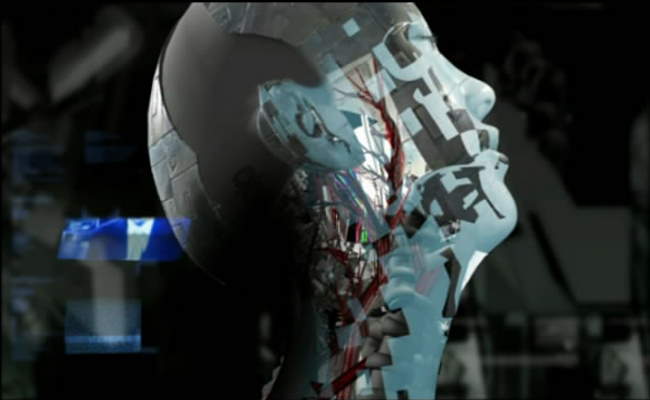
Fragile Machine - a Cyberpunk Operetta: If there was ever such a thing as a cyberpunk operetta, Fragile Machine is it. Fragile Machine is an indie anime film short created by a very small organization of talented artists called Aoineko. Fragile Machine’s narrative is largely told through haunting Chinese and English vocals set to a rhythmic, keyboard-laden techno beat (you can hear the main track by clicking on the aoineko link above). The combination of mind-expanding surreal android images with Aoineko’s music provides an intensely immersive experience – one which slowly envelopes your senses until you are a participant on Leda Nea’s journey. Fragile Machine is divided into six distinct chapters, and is narrated by a small android girl named Goho.

The Story: Leda Nea, a lead scientist heading up android firm, Göln Remedios’ Project Zero, is distraught over the death of her daughter, Mary. She no longer is interested in living, and decides to sign away her rights to be become a test subject for Project Zero. Leda Nea agrees to have her consciousness inserted into an android body, but the experiment goes horribly wrong, and Nea’s consciousness is permanently trapped in the android. A year goes by and Leda Nea becomes Göln Remedios’ primary work. Leda Nea has lost all sense of her former life, but still realizes she is trapped in a antiseptic prison – one which she desperately wants to escape.
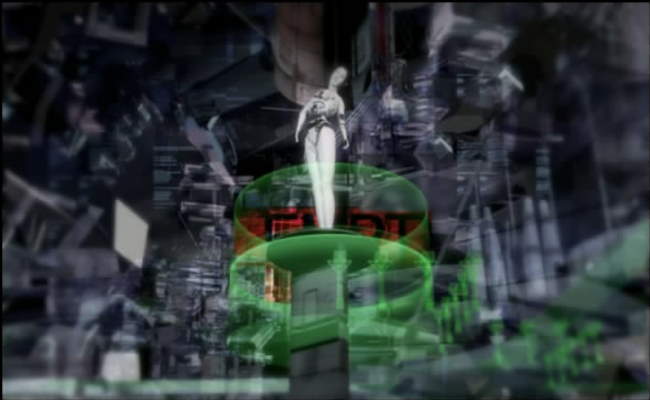
Eventually Leda Nea finds a way to trick her captors by using some of the android shells as decoys. Allthough still pursued by Göln Remedios’ droids, she escapes to the woods, and, surrounded by nature, begins to remember her humanity. In doing so, Leda Nea remembers that she hates herself and her very existence, and finally begins to remember the daughter she has lost. She continues to be pursued by Göln Remedios’ drones, but instead of getting captured she throws herself into a lake, and thus destroys her android body. At this point, her soul frees itself from its android host and embarks on an entirely new journey – one which could potentially provide Leda Nea salvation by connecting her back with that which she lost. While the ending chapter is visually astounding, I can’t go further without giving away the rest of the story.

A Post-modern Narrative: One one level, Fragile Machine appears to be a straightforward narrative in that it is explicitly divided into six chapters. Yet in watching this film, it becomes clear that the narrative is anything but straightforward. To understand the story, the viewer must pay close attention to the symbols, lyrics Goho’s commentaries, and the various visual indicators sprinkled throughout the film. While lasting just over 30 minutes, those interested in understanding the message will definitely benefit from giving Fragile Machine multiple viewings. The third time through, I found myself freezing the screen on a number of images in order to understand their significance. The story summary above is the result of watching Fragile Machine a number of times prior to piecing this all together. For instance, only very late in the film do you find out that Leda Nea is project manager of Project Zero, and is thus, responsible for her own destruction.
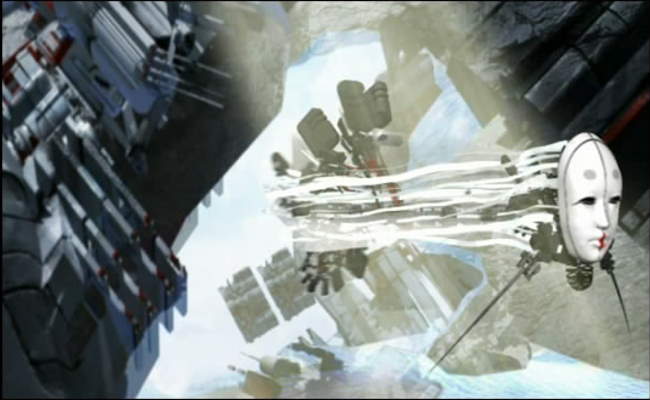
The Visuals: Even if you don’t care to spend time understanding the rich story and symbolism, Fragile Machine’s android visuals alone are well worth the cost of the DVD. Fragile Machine comes at man-machine integration and android creation and destruction from such a myriad of directions that it leaves the viewer in a state of wonderment. Through the film, color palettes are linked with the various symbols portrayed in Fragile Machine. Visual Homages are paid to a myriad of sources including Blade Runner, Metropolis, Ghost in the Shell and Planet of the Apes.

Animation Issues: While the artwork in Fragile Machine is intensely creative, the CG movement is definitely subpar when compared to some of the larger budget works. When Leda Nea is running, or the puppet narrator, Goho, is talking, the quality of the animation negatively affects the immersion. Depending on how you come to see Fragile Machine, this might be enough to turn you away from this incredible picture (perhaps this accounts for the insanely low score on IMDB). However, I would argue that the animation is only a minor knock in an otherwise perfect film short. In looking at the immensely small crew involved in making Fragile Machine, they pretty much nailed all aspects of this film that didn’t require massive CG animation engines. The post-modern story, the artwork and the music are all par excellence.
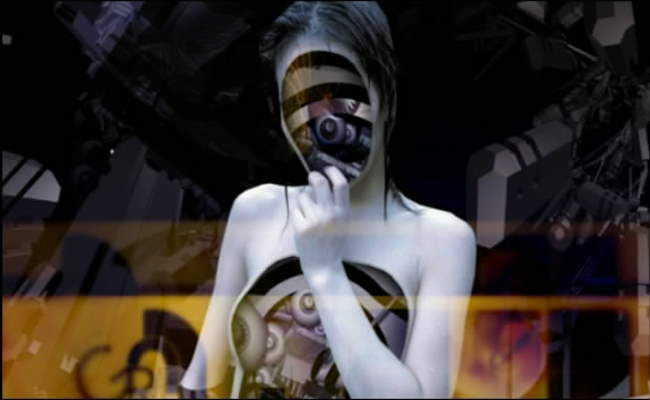
Interpreting Fragile Machine: Fragile Machine is visually and symbolically rich enough that the viewer can extract a number of fascinating thoughts. However, the larger point that Fragile Machine traces is a common cyberpunk theme - the idea that humans, in its pursuit of technology believes they will become omnipotent, with power over life and death itself. Yet in pursuing this course, we end up losing that which defines us – our humanity. Eventually, this pursuit of the taboo ends up destroying our very society. In a wonderful review of Fragile Machine, Jens points out that the corporation developing the androids, Göln Remedios, is visually similar to the Tower of Babel – both are stretching to the heavens in order to become God’s equal.
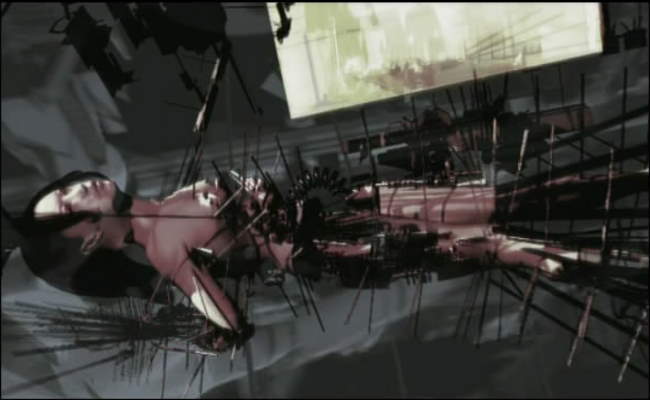
When we find out that Leda Nea is in fact the Lead for Project Zero, the emphathy shifts from a rather simplistic view Göln Remedios’ evil CEO figure being responsible to a far richer view. Leda Nea, in losing her daughter has lost her humanity, and thus no longer feels compelled to remain “human.” Her decent into subverting humanity starts well before she is captured in an android body. It begins with her work to build project zero – a project which at it core attempts to extract humanity and incarcerate it within a machine host. One almost wonders if Leda Nea initiated Project Zero in response to her daughter’s death. While the evil CEO is clearly interested in using Leda Nea as a tool in attaining virtual Godhood, it is Leda Nea who chooses to become the virtual fallen angel (as depicted by her red hue much of the time during her android descent). But ultimately, Fragile Machine becomes a story of redemption, as Leda Nea’s lost daughter, as represented by the elephant doll, becomes her guide towards finding ultimate salvation.
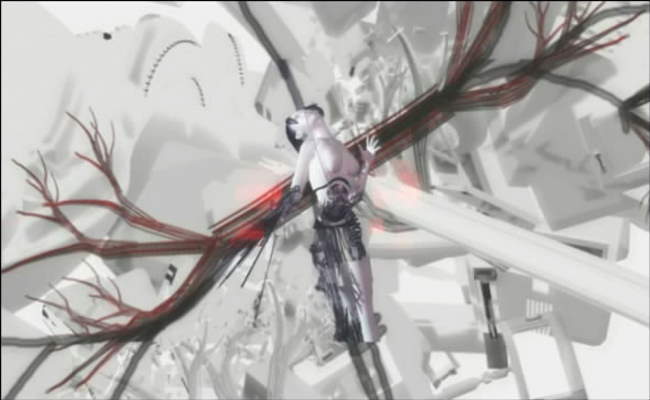
If an Android had a soul, what would happen to it when it dies? One of the more interesting questions Fragile Machine raises is the idea that if an android had a soul, what would happen when it dies? In pursuing this thought, Fragile Machine operates in the same territory as Ghost in the Shell, in which a human soul is essentially trapped within an android body. But the thought it raises can easily be taken farther than this: as we move ever closer towards sentient machines, what exactly becomes the difference between machines and humans? If machines become sentient, could they not also develop a soul? And if so, can this soul exist in some fashion even after its host has died?

What Does a Human Mask Represent? Similar to f8, Fragile Machine uses a mask of a human-looking face to represent the attainment of humanity. Only in this case, the mask represents humanity’s technology enabled drive to create post-humanity – androids in our own image. Interestingly, this interpretation masks when viewing the last chapter of Fragile Machine leads to an interesting conclusion about the pursuit of post-humans. One wonders whether it is possible to pursue sentient androids in a way that does not explicitly challenge God’s (or nature’s) sacred role over life and death. Fragile Machine almost seems to be advocating an evolutionary, emergent approach over an overt, dominating, dehumanizing approach.
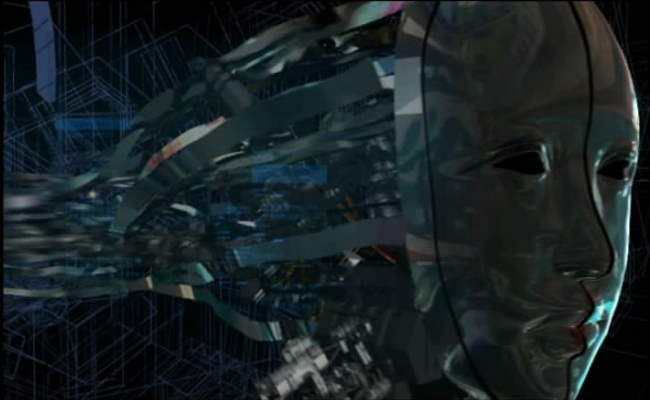
The Bottom Line: Rarely do we encounter a film so creative in its development, where the sounds and visuals are inexorably linked in expressing such an interesting story. While the animation isn’t on par with larger scale productions, the songs and visuals more than make up for it. In totality, Fragile Machine conveys a complex, multi-layered story that is rich in symbols and ideas. This is truly a piece of cyberpunk art not to be missed. The DVD was out of print but is available again (see in the comments section for details). Give it a try if you’re looking for something different.
Spoiler Alert! Page 2 has more screencaps, but some relate to the ending –>>
~See movies similar to this one~
Movie Review By: SFAM
Year: 2000
Directed by: Chris Cunningham
Written by: Björk
Degree of Cyberpunk Visuals: High
Correlation to Cyberpunk Themes: Medium
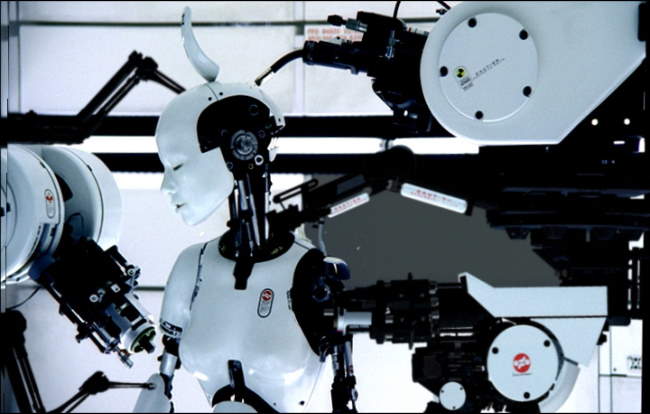
You’ll be given love
You’ll be taken care of
You’ll be given love
You have to trust it
Overview: Bjork’s video, “All is Full of Love” was the first DVD single ever released. Looking at it, its not difficult to see why. This thing is beautiful, innovative, wonderfully shot. All is Full of Love raked in the awards back in 2000, including the MTV Best Special Effects award, the ITS Monitor award, and the Best Music Video at the 1999 London Effects and Animation (LEAF) awards. As I really don’t have a video category yet, I’m including this in my film short category.
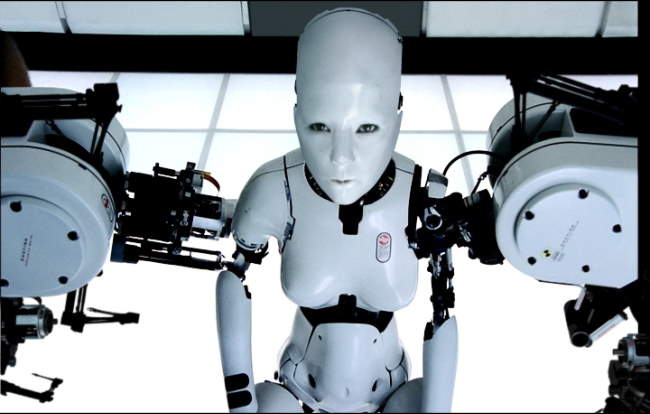
Maybe not from the sources
You have poured yours
Maybe not from the directions
You are staring at
The Video: All is Full of Love opens with a female looking robot is being put together, while she is musing (singing). Eventually another twin robot enters the picture, and the two robots begin to embrace to the chorus, “All is full of love.” Throughout the entire video, the builder machines continue to make adjustments to the pair. The pacing is slow and deliberate, which mirrors the song.
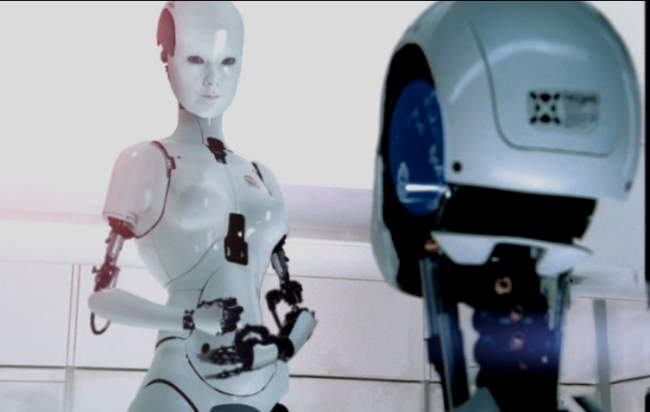
Twist your head around
It’s all around you
All is full of love
All around you
The Visuals: All is Full of Love provides incredibly realistic and high production values. The result is an incredibly immersive posthuman experience. Almost immediately the viewer is drawn into the setting and does not leave until the video ends. The colors are almost all whites and blacks, with minor hues of purple interacting.
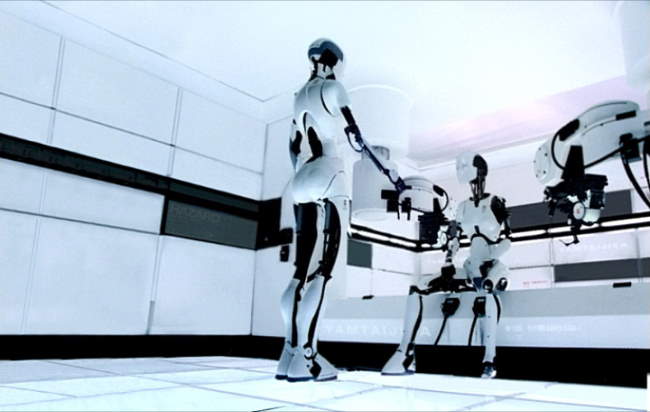
All is full of love
You just aint receiving
All is full of love
Your phone is off the hook
All is full of love
Your doors are all shut
All is full of love!
The Robots: The absolutely wonderful Robots in this video were built by Paul Catling. These robots have been pretty influential, and most certainly influenced the robots in the large scale cyberpunk movie, I, Robot. Also, I’d hazard a guess that this video also most likely influenced artist Nicolas Leblanc, who did the robots in the Cyberpunkreview header.
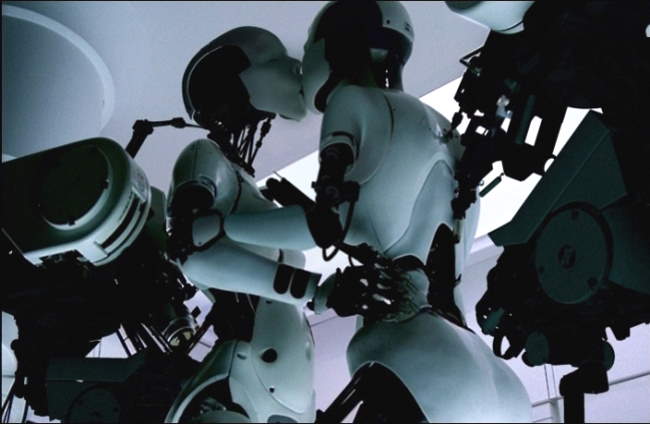
All is full of love
All is full of love…
The FX: Chris Cunningham used Glassworks for all the FX in this video. Glassworks does a wonderful job of blending the actual robot with Bjork’s face. But really, it appears the process was even more complex than that, as Chris Cunningham relates in an interview with American Cinematographer:
“Every single shot in the video has about four layers. The first element is the shot of the set and the robot prop doing nothing, which we’d film for about 21 seconds. We’d then remove the prop Björk robot and put (the real) Björk in with her face painted white and wearing a blue suit. Using a mix of the (master shot and a live feed of Björk in frame) on the video monitor, we’d then try to match up as much as possible. It was a pretty crude and fairly terrifying method of shooting the video. For the Avid editing, I basically had a series of stills of a robot on a set and some crude shots of Björk wearing a blue suit with her face painted white. There was a definite feeling of insecurity all the way until the first couple of shots were finished in post, when I could finally tell whether it was working or not.” (American Cinematographer)
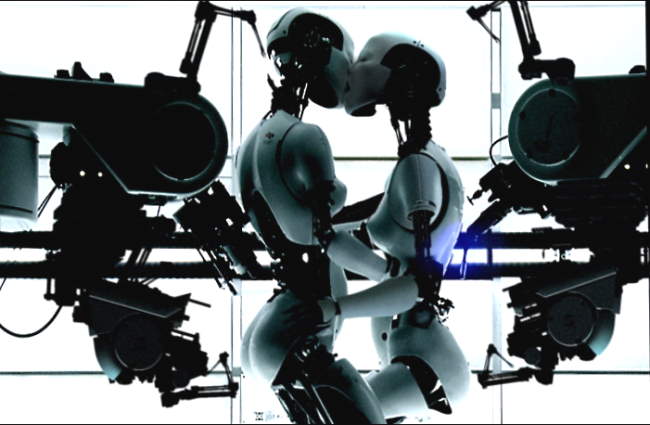
All is full of love
All is full of love…
The Bottom Line: Truly, Bjork’s All is Full Of Love is an absolutely terrific cyberpunk music video. I can’t say enough how much I think of this. Give it a watch.
~See movies similar to this one~
This post has been filed under Short Film by SFAM.
Movie Review By: sfam
Year: 2005
Directed by: Jonathan Joffe
Written by: Jonathan Joffe
Length: 11 Minutes
Degree of Cyberpunk Visuals: Low
Correlation to Cyberpunk Themes: High
Key Cast Members:
Dying Man: William B. Davis
Sales Associate: Andrew Kirvanek
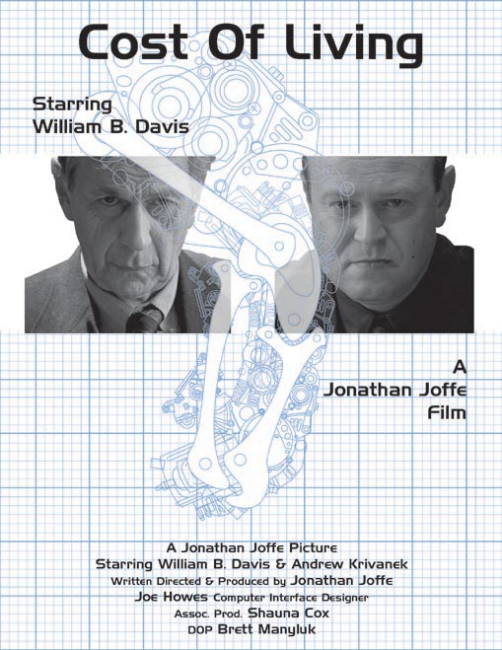
Overview: While at Balticon last weekend, I saw this wonderful cyberpunk short at the Balticon Film Festival. I still don’t know if it won or not, but Cost of Living was my second favorite (and only cyberpunk film) of the 12 mostly terrific short films shown (my favorite was a very emotional deep space scifi short film called Microgravity). Cost of Living has great production values, and goes with a light-gray/white dominating color scheme. Often, we find white in cyberpunk movies representing high-tech methods of dehumanization - Cost of Living definitely adheres to that convention.

The Story: Cost of Living takes place in a near-future time where body replacement has become all the rage. Brains are removed from their human hosts and placed into a cyborg body. Cyborg body part companies now compete on features and price, and have a range of models available, not unlike a car dealership might. A dying man, played wonderfully by the X-Files smoking man, William Davis, comes into the showroom floor of the lowest priced cyborg dealer. After going through the models, he quickly lets the salesman (Andrew Kirvanek) know that price is his driving factor. After settling the low-priced base model (the Marathon Series), they discuss financing. In the end, the dying man doesn’t have enough money. The salesman then poses him the option of, in effect, working off the cost of the new body. In essence, the deal is he would become a slave of the corporation for the next 100 years, working 14 hours a day for 6 days a week. In the end, the choice becomes 100 years of slavery or death. The set-up is very well done, and Davis especially really sells the dilemma. What would you choose?
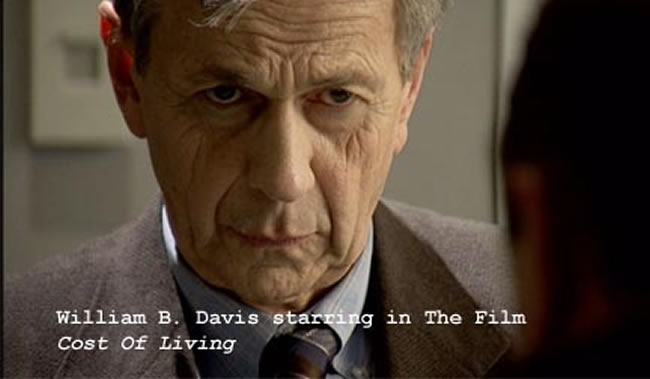
The Bottom Line: The film maker, Jonathan Joffe, taglines this film short with the question, “How much would you pay to live forever?” In essence, this actually becomes an optimistic view of the future Joffe poses. Considering the cyborg body the dying man will be receiving is bottom of the line, one is left with the question, “Will the low-end body last more than 100 years, or does it magically expire at that time, forcing the dying man to get yet another 100 year term?” This short film really does capture the essence of cyberpunk in showing unchecked corporations holding sway over humanity itself. An inside joke, having the X-files’ William Davis - the Smoking Man - dying of cancer is just a terrific little bonus!
While somewhat predictable, Cost of Living is wonderfully executed and well worth a watch. I don’t know where to point you to in order to see this short film - it doesn’t even have an IMDB film reference. I’m emailing Mr. Joffe about this - hopefully we’ll see him respond here (EDIT - Mr. Joffe responded - see the trailer in the comments).
~See movies similar to this one~
This post has been filed under Short Film by SFAM.
Movie Review By: SFAM
Year: 2001
Directed by: Jason Wen
Written by: Howard & Jason Wen
IMDB Reference
Length: 13 minutes
Degree of Cyberpunk Visuals: High
Correlation to Cyberpunk Themes: High
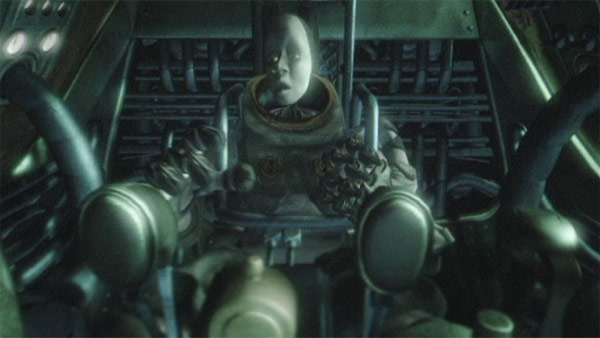
Overview: f8 is a truly wonderful 13 minute film short that captures almost all the key elements of cyberpunk without using any dialogue! f8 was well received in many of the 2001 best animated film short awards (including the Hollywood Film Festival, the Jury Award, and others). The 3D graphics, while not as high quality as might be found in a large budget movie, are more than adequate. Wen’s selection of viewpoints, lighting decisions, movement and shadows are able to emphasize the best qualities of the 3D animation.
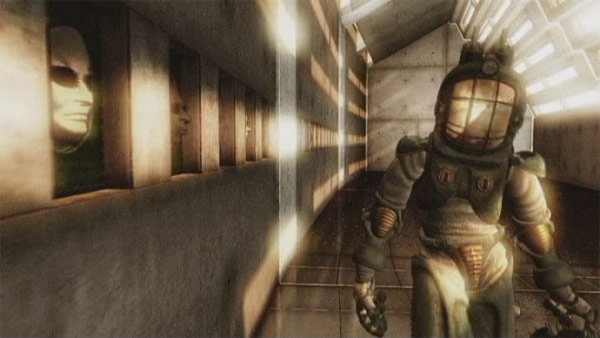
f8 centers on a nameless lead character in a strange futuristic society who wants to gain individuality. He lives in an oppressive, metropolis-like controlling society, where your fate and role is predetermined. But an underground has developed where individuality appears to be the key for admission. The plot follows the plight of our protagonist who attempts to steal a “face,” and thus, will have the ability to express an individual personality.
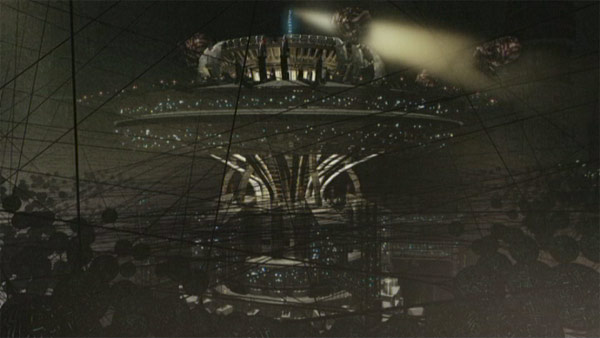
Unfortunately I cannot divulge too much more of the plot for fear of spoiling it. You can get this movie at Best Buy for about 10 bucks - even though its only 13 minutes, I think its worth it. You get 5 commentaries, and truly, the story is interesting enough that you’ll watch it more than a few times. But instead of a plot, here’s some more screen captures of it - these should give you an idea of f8’s visual splendor. Like many cyberpunk films, one color tends to dominate f8 - in this case, yellow is the predominate color.
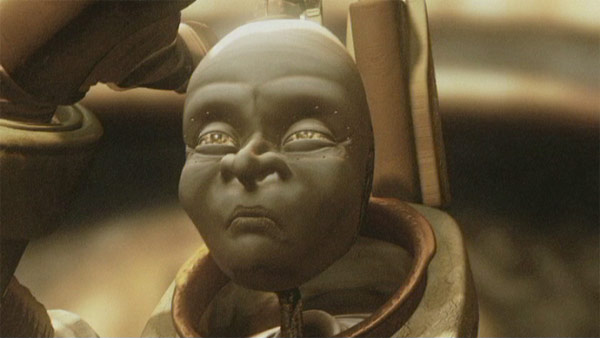
The faces are quite striking in f8 - more so even when you finally get to see their bodies!
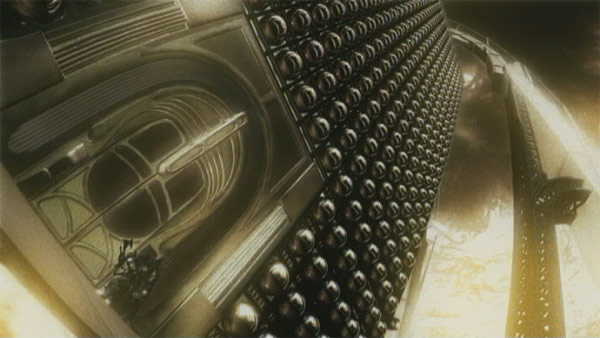
Talk about a Noirish looking building! This has all sorts of high tech, ominous vibes…
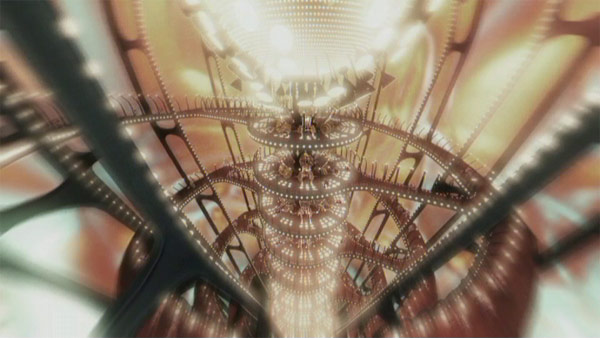
f8 has some fantastic visuals for a 13 minute film short.
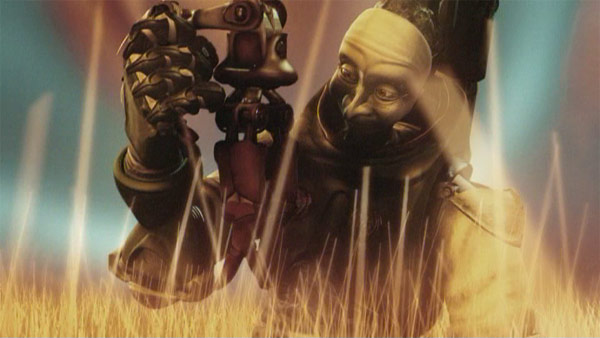
For some reason, this scene really reminds my of the scene in Nausicaä where she is walking through the field of gold tentacles.
~See movies similar to this one~
|































